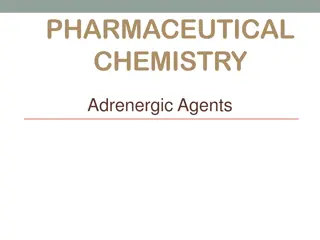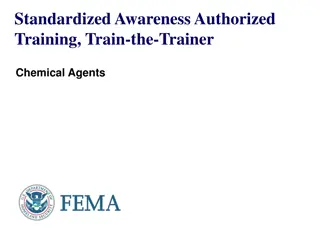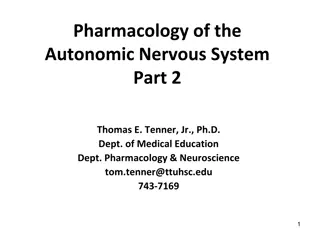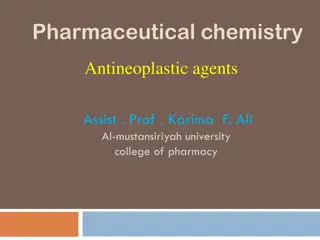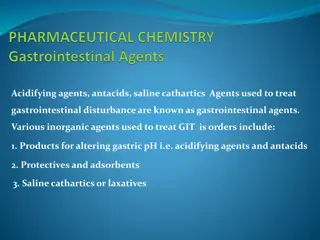Overview of Chelating Agents in Pharmacology
Chelating agents are organic compounds that bind with heavy metal ions to form non-toxic complexes excreted in urine. Dimercaprol, Succimer, Edeta, Calcium disodium edetate, Penicillamine, and Desferrioxamine are key examples used in treating metal poisoning by forming stable complexes with metals for elimination.
Download Presentation

Please find below an Image/Link to download the presentation.
The content on the website is provided AS IS for your information and personal use only. It may not be sold, licensed, or shared on other websites without obtaining consent from the author.If you encounter any issues during the download, it is possible that the publisher has removed the file from their server.
You are allowed to download the files provided on this website for personal or commercial use, subject to the condition that they are used lawfully. All files are the property of their respective owners.
The content on the website is provided AS IS for your information and personal use only. It may not be sold, licensed, or shared on other websites without obtaining consent from the author.
E N D
Presentation Transcript
Chelating agents Pharmacology SDL project Group no. 10 Section B10
Index 1. Definition 2. Dimercaprol 3. Succimer 4. Edeta 5. Calcium disodium edetate 6. Pencillamine 7. Desferrioxamine of Chelating agents
Definition They are organic compounds which bind with heavy metal ions to form firmly bound complexes which are non-toxic and easily excreted in urine
Dimercaprol (bal) It is effective in treatment of acute poisoning of metal E.g. arsenic, mercury, antimony as affinity of BAL to metal ions is greater than that metal to tissue enzymes.
Succimer (di-mercapto succinic acid) dmsa Used for the treatment of high blood lead concentrations, and mercury poisoning . Mechanism: It binds with high specificity ions of lead in the blood to form a water-soluble complex excreted by kidneys.
Edta (Ethylene diamine tetracyclic acid) it is effective in treatment of poisoning with Ca++. Mechanism: once injected to the blood stream, it circulates in blood, binding to Ca++ and collecting all the metal into a compound that s filtered through the kidney and released in the urine.
Calcium disodium edetate It is a salt of edetate with two sodium and one calcium atom Mechanism: It is used by IV infusion to chelate lead in lead poisoning because lead has a great affinity for EDETA, than calcium and thus replaces calcium in this complex
Penicillamine It is effective chelator of copper. It is mainly used in hepato -lenticular degeneration "Wilson's disease" it is may also be used for mercury, cobalt, lead to poisoning as well as rheumatoid arthritis.
Desferrioxamine of Chelating agents Selectively chelates iron in ferric state so, used in acute iron poisoning.
Chelating activity of some drugs: can chelate Tetracycline ??++,??++,??++ can chelate Salicylates ??++,Fe++




